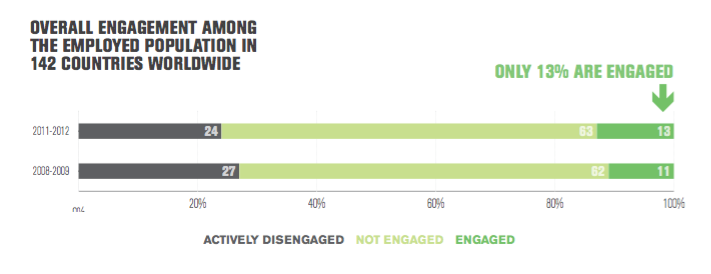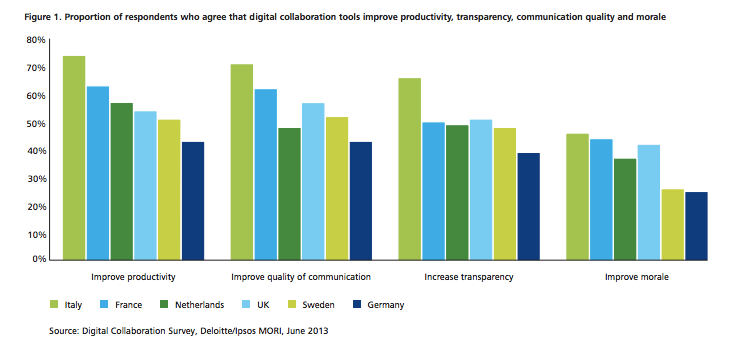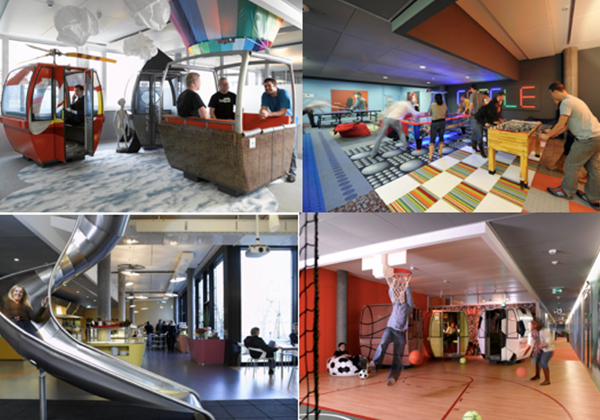 According to a Gallup poll, the average working American is at their job for 47 hours each week, almost an entire day over the standard 9-5 schedule. 39% of those surveyed say they work 50 hours or more each week.
According to a Gallup poll, the average working American is at their job for 47 hours each week, almost an entire day over the standard 9-5 schedule. 39% of those surveyed say they work 50 hours or more each week.
That’s a significant portion of a person’s life. It makes sense that most employees would have a strong opinion on their jobs and the companies they work for, whether positive or negative.
Companies seek to keep the overall working experience positive and employees engaged. They want those hours spent within their walls to motivate workers to go the extra mile and put their true 110% into what they do. The opposite, disengagement, has wide-ranging costs that organisations should be keen to avoid: lost productivity, weakened customer service, increased sick days, and more are among the consequences of disengagement that have been proven through numerous studies.
There is a range of strategies organisations have adopted to improve employee engagement, and they have been increasingly visible over the last few years, especially since Gallup’s original study in 2012, which showed that engagement was down around 30%.

(Source: Gallup, State of the Global Workplace Report, 2013)
Many have adopted the Silicon Valley approach, providing office amenities such as pool tables and cold brew coffee on tap or significantly relaxing the dress code. With younger companies especially, these developments are still very much in vogue.
Yet companies are best advised to start with a simpler approach, addressing the work itself to ensure that while completing their daily tasks, workers know their voices are heard and that they’re playing a valuable role. No amount of perks will save engagement if employees wonder why they perform the core functions of their jobs.
That’s why we’re recommending the following 5 ways to improve employee engagement in your business.
Step 1: Provide the Right Tools and Technology
This is an important and tangible first step to improving employee engagement. The workplace tools such as room scheduling systems, room screens, desk booking systems, desk screens, kiosks and wayfinders help to transform the workplace, empowering employee engagement, collaboration and increased efficiency.
The importance of collaboration in the quest for innovation is widely acknowledged, but companies need to recognise that it will not happen unless the right environment is created, in which it can take place easily and naturally. Setting out an intention to change working practices is clearly a good place to start, but this must be matched by real adaptations in the workplace systems if any meaningful changes are to be achieved.
{{cta(‘5a80dec9-fc5b-48ed-8703-bce5367506a3′,’justifyleft’)}}
Workforce, especially the new generation, want to work flexibly, with an increasing number of employers choosing to pursue the so-called ‘start-up’ working culture that has enabled lots of innovative new players to take the market by storm.
These tools demonstrate to workers where they fit into larger team and company goals, giving them a sense of purpose in all that they accomplish. They ensure that workers’ performance is assessed based on quality of work performed, rather than hours spent at our desks. They also connect employees with others whose skills they need to utilize in order to reach their highest potential.
In other words, the right technology can remove barriers to performance for all employees, while simultaneously demonstrating to them how valuable their accomplishments are to the company.
Step 2: Give Recognition Where It’s Due
This dovetails the last point nicely because, as we pointed out, meeting room and desk booking technology can play a big role in giving employees recognition.
Imagine toiling day in, day out, never understanding where your efforts went, and never getting so much as a “thank you,” or a “good job.” How engaged do you think you’d be? Unfortunately, this is a reality for more people than companies would probably like to admit.
Being conscious of what employees work on and accomplish is a big part of the battle for higher engagement. Merely knowing that someone else appreciates them and their work, is enough to make employees put in significant and sincere effort. In fact, 69% of employees report that they would work harder if they got more recognition.
There are many ways to show this appreciation. Some companies give thanks over their intranets, using rewards programs that both give employees material or monetary compensation and display their accomplishments publicly.
Step 3: Refining Your Physical Space
I know this may run slightly counter to the point I made earlier that fancy, Silicon Valley style comfort isn’t everything. However, there is something to be learned from that trend. The physical space of an office matters. From the office furniture to the type of lighting, employees shouldn’t feel that they’re caged indoors while they’re at work.
The days of the cubicle are over, with open floor plans and modern looking office furniture like contemporary office tables & chairs now playing a huge role in reshaping the look and feel of office design. Not only is this new style less harsh and regimented, it promotes collaboration. By allowing workers to interact with one another in a more flexible, relaxed, and friendly environment, you smooth the path to teamwork.
Another facet of using physical space to promote engagement is allowing, and even encouraging, remote work. We live in a world where employees increasingly request the ability to work from anywhere, and the internet is making it possible for them to do this without losing anything in collaboration or productivity.
This, in combination with a fresh office design, can be very powerful. Many people feel more productive at home but only when they have the option of going into an office in the morning as well. Ensuring that both of those choices provide a positive working experience makes people much happier to go to work each day.

(Source: OfficeSnapshots.com)
Step 4: Emphasise Accomplishments, Not Hours Worked
As it was highlighted earlier, Americans are working well over the traditional 40 hour week on average. While some are making good use of that time, many people are in their offices for those extra hours simply because they’ve been pressured to be present. Those hours that they spend at work without being productive don’t contribute anything to the organisation and make people feel trapped or resentful.
On the other hand, when a company rewards the accomplishments of its workers, the equation changes. Employees deserve to know that what they accomplish with the hours they spend working is what matters, rather than their mere presence.
Step 5: Don’t Wait
Unfortunately, many companies understand that employee engagement is important but never get around to implementing policies aimed at promoting it. The reason may be that they don’t think new policies are in their budget, that they have other priorities that come first, or any number of reasons.
The fact is that disengagement is too great of a risk to be ignored. Happy, engaged employees add much to the bottom line, while their disengaged counterparts cost far too much in both money and productivity.
There are many actions you can take to promote engagement at your organization. You don’t need to begin with sweeping policy changes. Start by making small but meaningful changes, and the momentum you build will propel the organisation in the right direction. Remember: employee engagement is the greatest asset a company can have.
Blog post originally published on Calibre Office Furniture.